Bluehead Chub SciArt Collaboration Encourages Graduate Student Creativity
October 6, 2022

Research isn’t the only thing that graduate students can do while they work in a lab; they can also make art! In Dr. Emmanuel Frimpong’s lab in the Department of Fish and Wildlife Conservation at Virginia Tech, that’s just what is happening — with support from the Center for Communicating Science.
A SciArt collaboration involving Frimpong; Dr. Eugene Maurakis, visiting research scientist and adjunct professor at the University of Richmond; Hiromi Okumura, collegiate assistant professor of Studio Arts at Virginia Tech; and C. Meranda Flachs-Surmanek, M.F.A./M.S. candidate in theatre and urban & regional Planning at Virginia Tech, also includes Frimpong’s graduate students Samantha Brooks, Maddie Betts, Thomas Bustamante, and Emma Hultin.
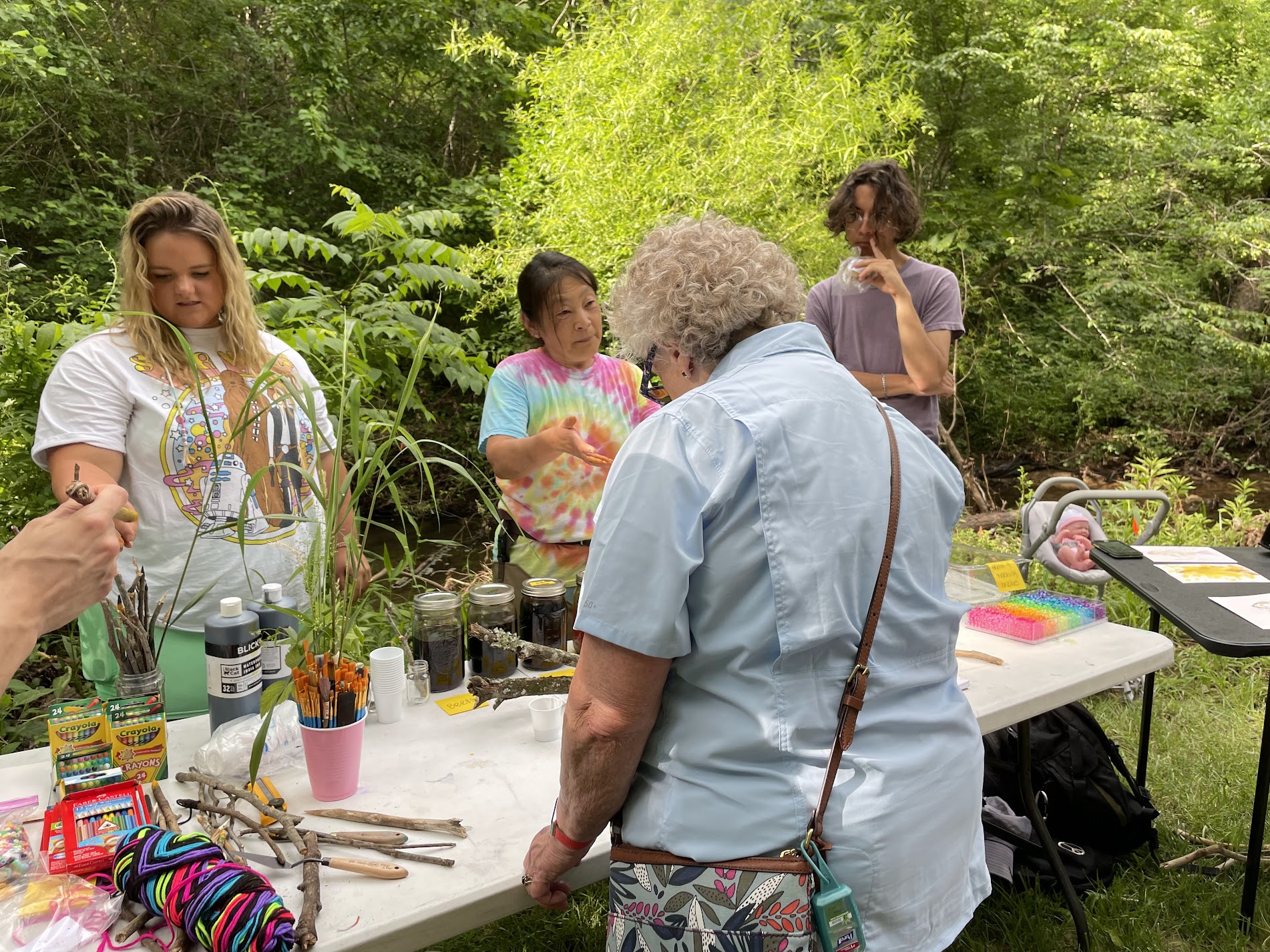
“The thing that really sets our lab apart from other labs is the emphasis that we put on creativity,” says Brooks, “and everyone contributing their own creative spirit to our work.” The combination of the creative spirits of graduate students has been essential to their success in communicating their research to the public, she says.
Okumura and Flachs-Surmanek met Frimpong and Maurakis in a Center for Communicating Science “collaboration incubator” in May of 2021 and later received funding from the Center to support their creative endeavors. During the all-day workshop, participants learned about one another’s work and had opportunities to form connections and brainstorm together.
The interdisciplinary team is working to educate the public about a fish species called the Bluehead Chub. The males of this unusual species use their mouths as tools to pick up rocks from the bottoms of streams and rivers. They then use those rocks to construct structures — nests — where they can reproduce and keep their eggs safe. Frimpong’s lab team studies the Chub’s importance to the ecosystems of the streams and rivers in which it lives.
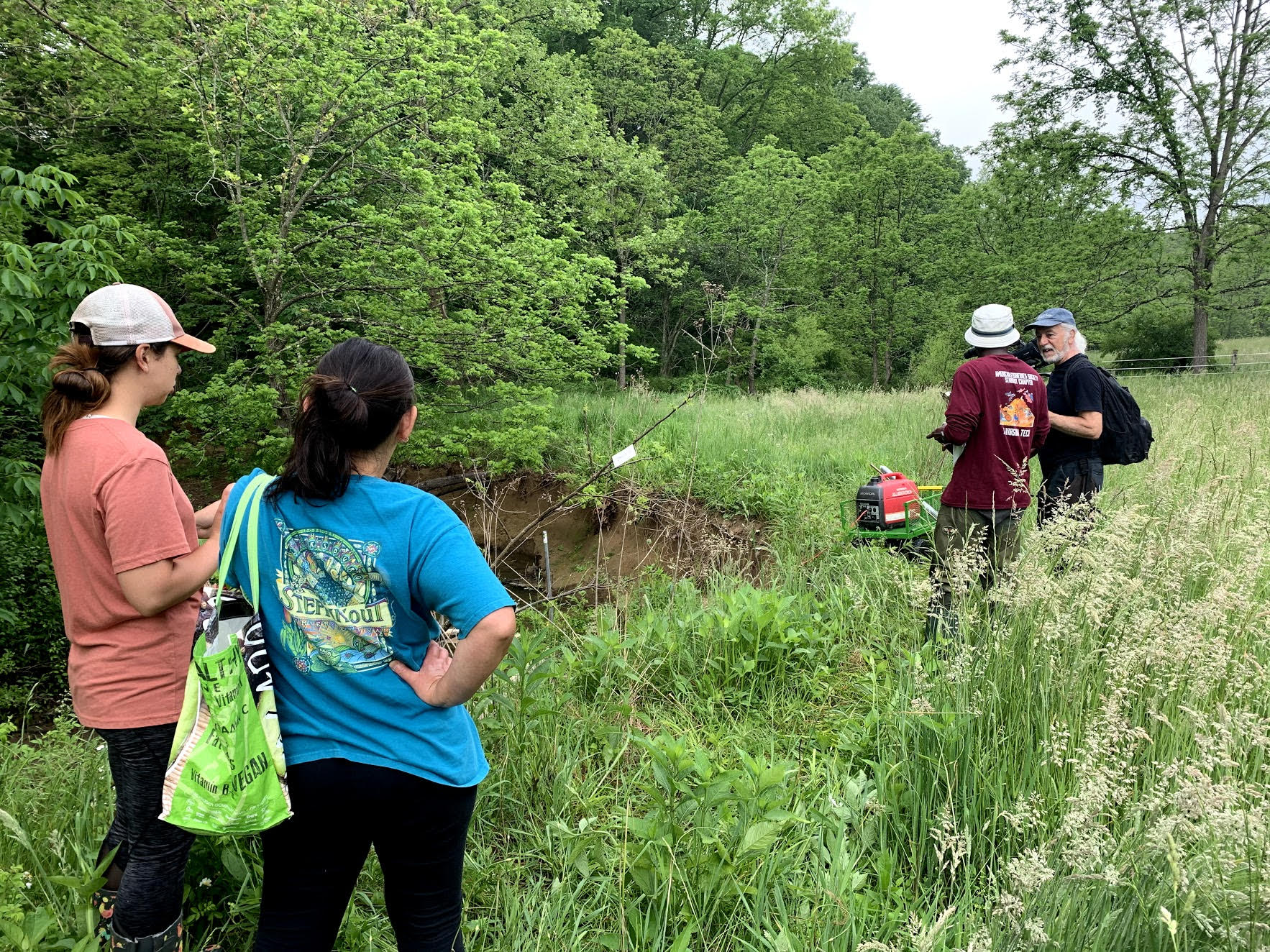
One study site is near Deerfield Trail, a public park in Blacksburg, where members of Frimpong’s lab observe the Chubs in Tom’s Creek making their rock structures during mating season. This public research location is one of the reasons the team was eager to get involved in a SciArt collaboration. They are often approached and asked about what they’re doing, a perfect opportunity to educate people about the research. Expanding that endeavor into a SciArt collaboration focused on using artistic methods to communicate science was a natural progression.
The species’ nest-building behavior provides an opportunity to get people interested in the environment, says Bustamante. “This fascinating behavior is really important for connecting our local communities to the natural world.”
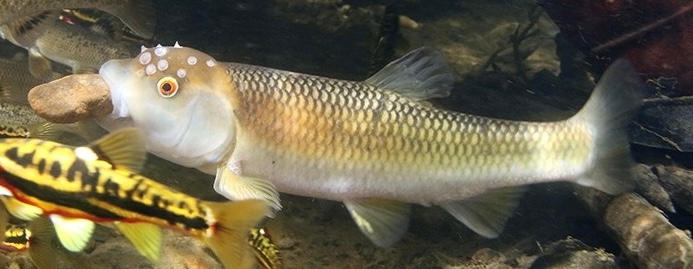
The team is using many approaches to share the story of the Bluehead Chub. They have incorporated art into presentations about the Bluehead Chub and its importance to streams and rivers. When they presented at Science on Tap, a monthly event held by the Center for Communicating Science, and at a local preschool, the audience created art about the Chub. Graduate students have led other events, a participatory workshop at a Master Naturalists meeting last October and a presentation as part of Communicating Science Week in March that included singing Frimpong’s field research song.
The team is also working on two other major projects for this collaboration: a soundwalk and a short video. The soundwalk will be of Tom’s Creek, with narration and visuals of the creek they hope to project onto different places around the creek where they do their fieldwork. The video, which is about the fieldwork done on Deerfield Trail, will be submitted to be projected onto local storefronts.
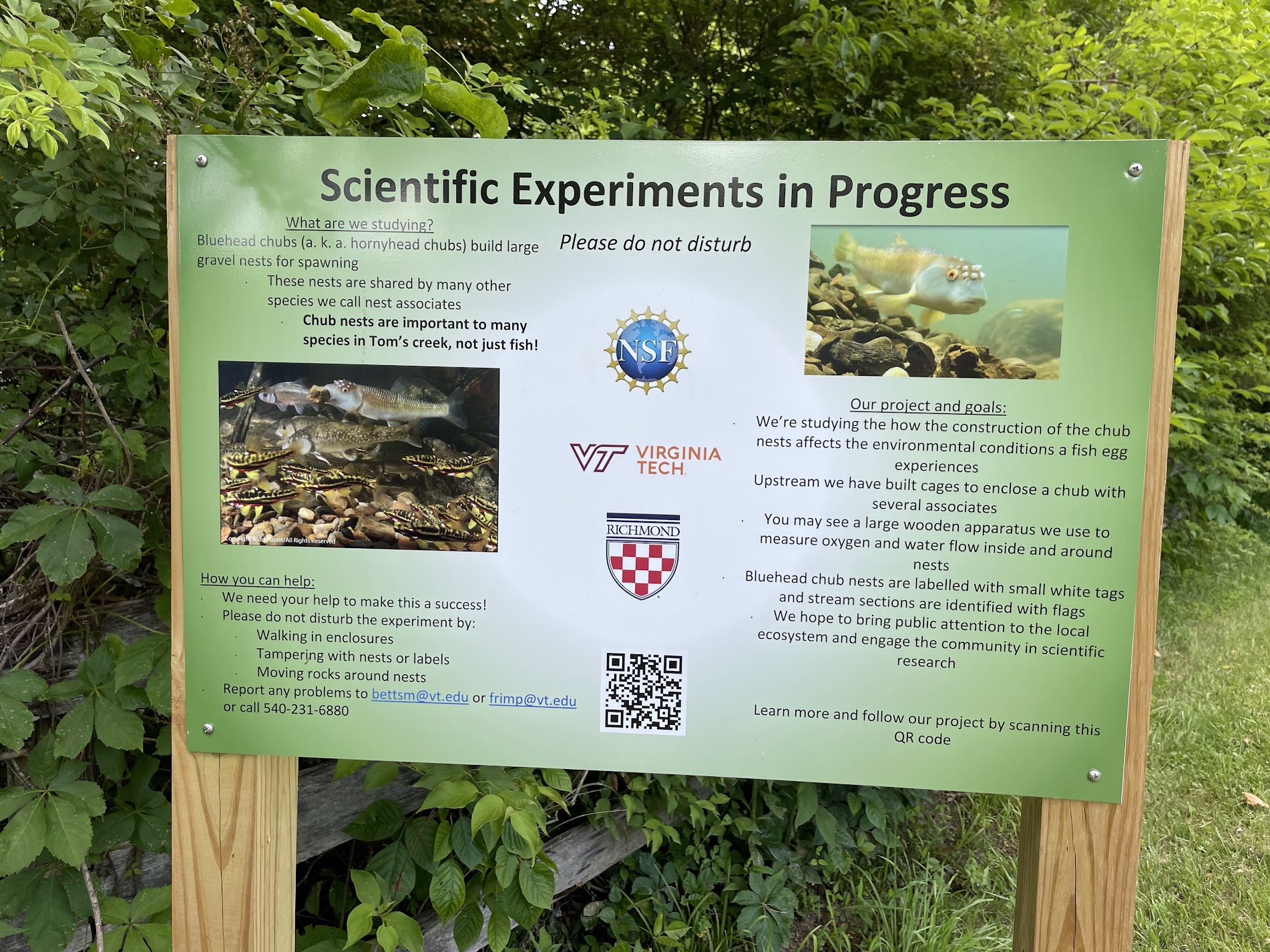
The team also has a large model of the Bluehead Chub, complete with a rock that can go in its mouth, which they take along to some of their presentations — including Bustamante’s Nutshell Games presentation at the Moss Arts Center March 19th.
With all of these projects, the members of this collaborative team have created many different entry points for non-scientists to learn more about the Bluehead Chub and stream ecology. In the first nine months of their collaboration, they estimate, they reached more than 250 people through workshops, art exhibits, and even the town of Blacksburg Christmas parade.
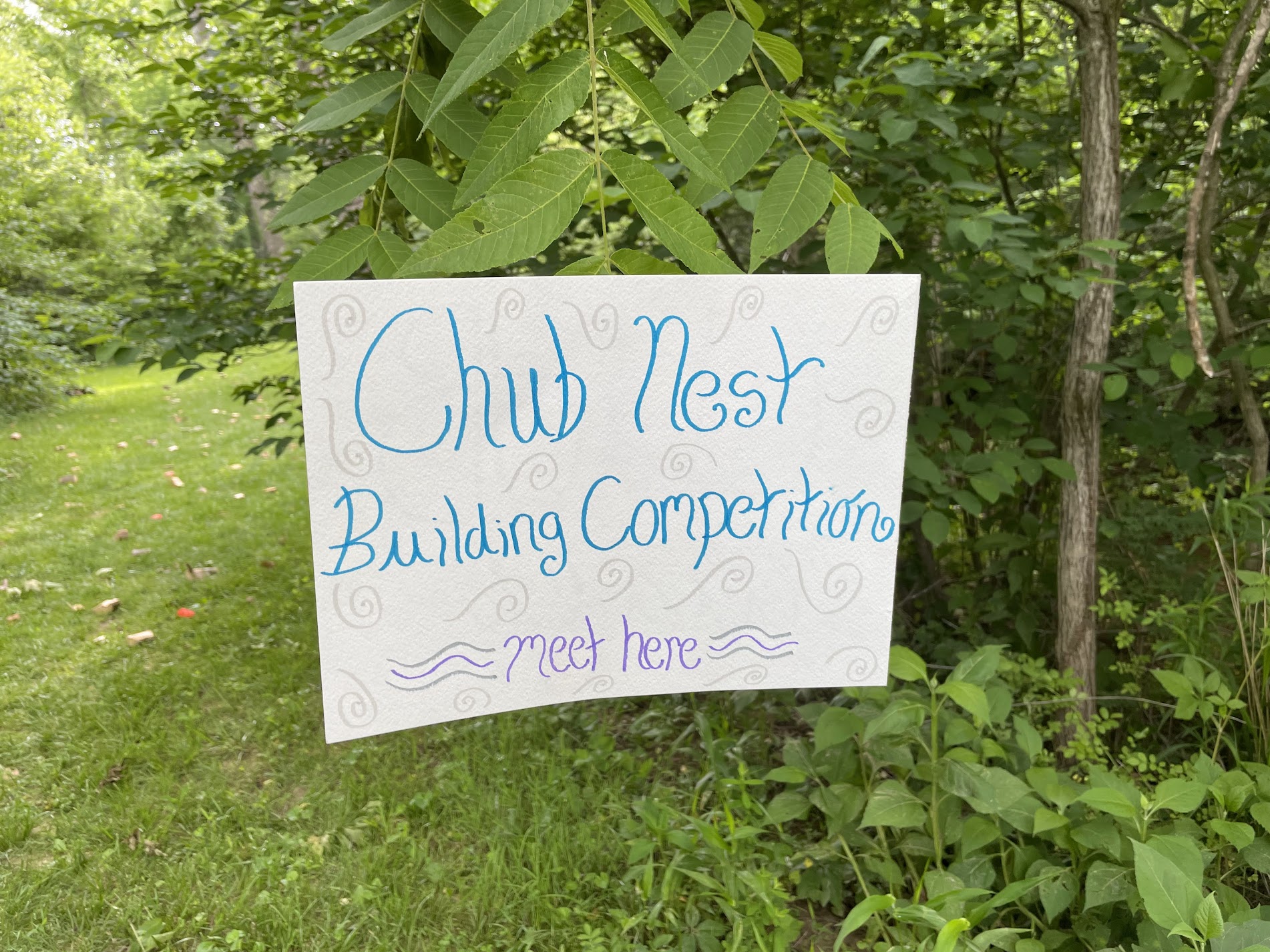
Involving graduate students both in artistic projects and in the artistic process is very important to the team. Graduate students are included in planning meetings and also come up with their own ideas about additional art projects that could be done to share the story of the Bluehead Chub, which they hope to pursue in the future. The team leaders want to make sure that graduate students are “not only allowed but empowered to be involved,” says Frimpong. In his view, this collaboration is a way to ease students into communicating science — and impart a sense of duty — to prepare them for the future. “Communicating science to me is really important,” says Frimpong.
The Bluehead Chub research and outreach also are supported by a grant from the National Science Foundation.
By RJ Loyd, Center for Communicating Science student intern


